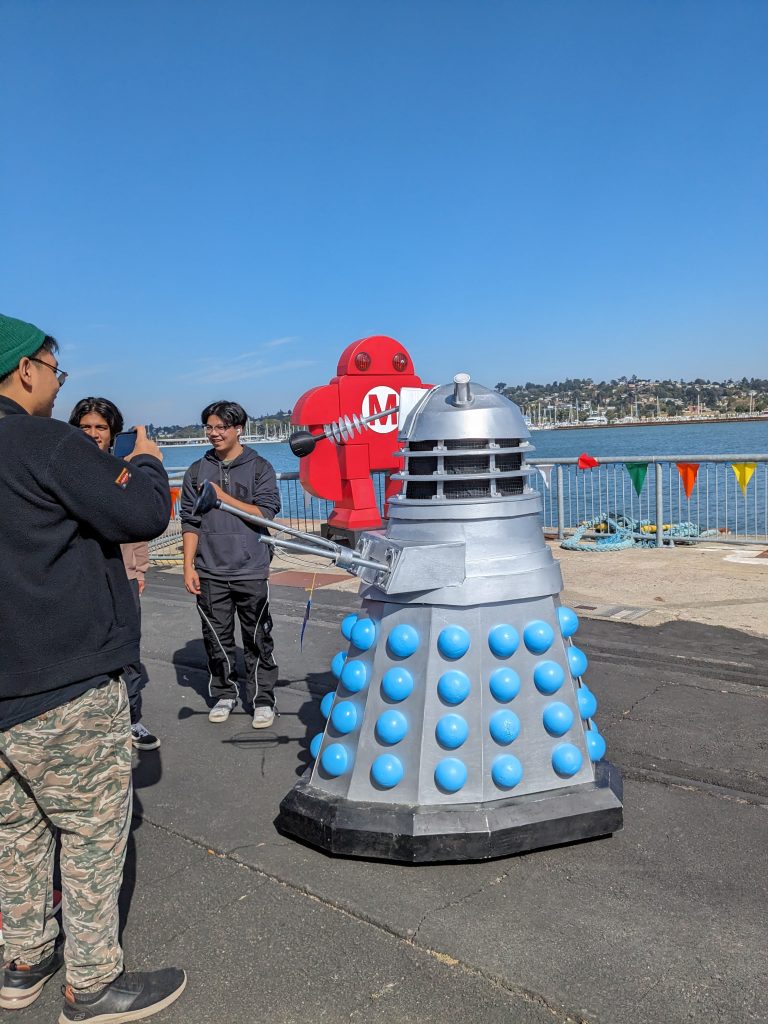Creating a Dalek
Birth of Dalek FAX
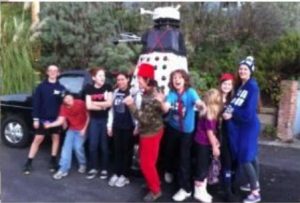
The Fairfax Dalex was conceived in 2013 when our First Lego League team (including Nick) had some friends who had made a Tardis for the local Fairfax Parade, so of course they wanted a Dalek. Andrew was volunteering as a robotics coach in their classroom, and Fairfax Dalek V1 was born. He was originally was created with cardboard with an old FIRST robot for the base, and mostly recycled parts (plastic apple cartons from Costco made great hemispheres, spice jars made wonderful ears, a wok for the head. but we broke out the piggy bank for a fresh toilet plunger for the weapon), and promptly broke down part way through the parade. It became a favorite with the kids, and each year they improved on it under Andrew’s guidance, taking the students with the Dalek to events whenever possible. Over the years he has acquired his own Dalek Facebook page. This began a long journey to today with many Maker Faires, science fairs, halloweens, maker popups, conventions, and making many friends along the way. Most of the original team members are now engineers or scientists of some sort.
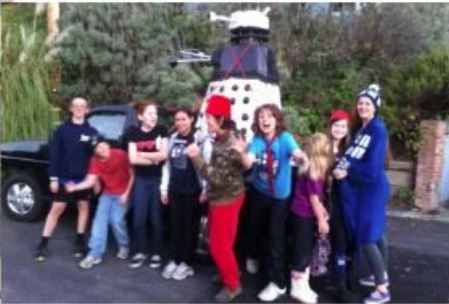
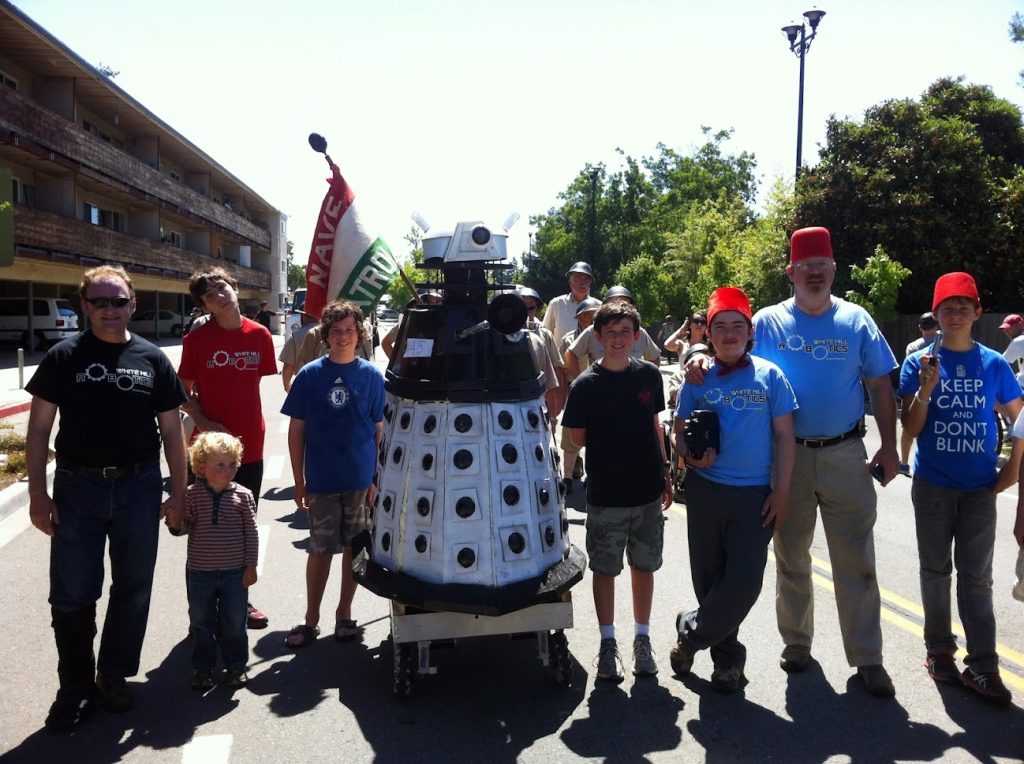
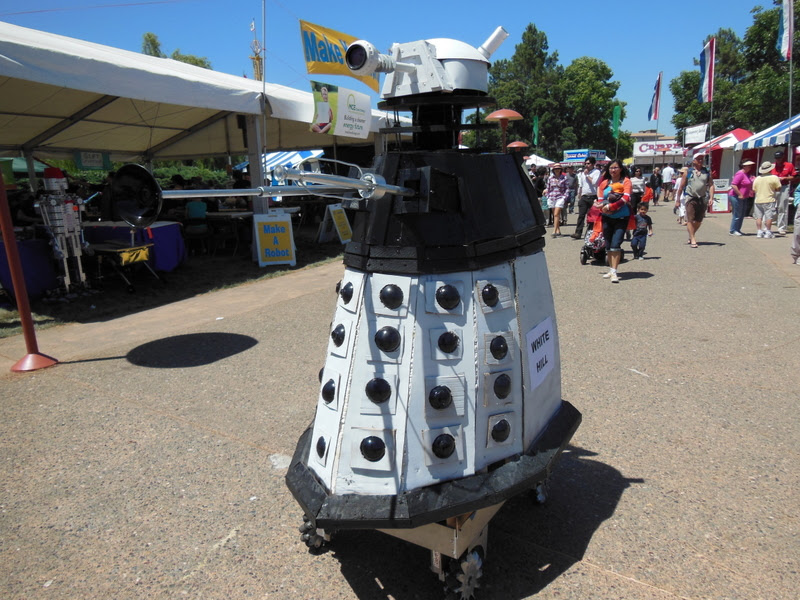
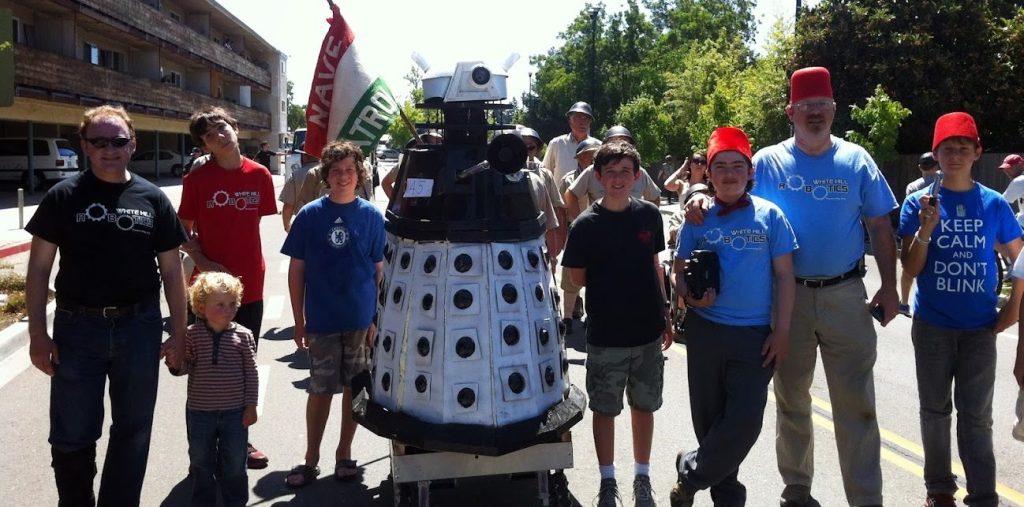

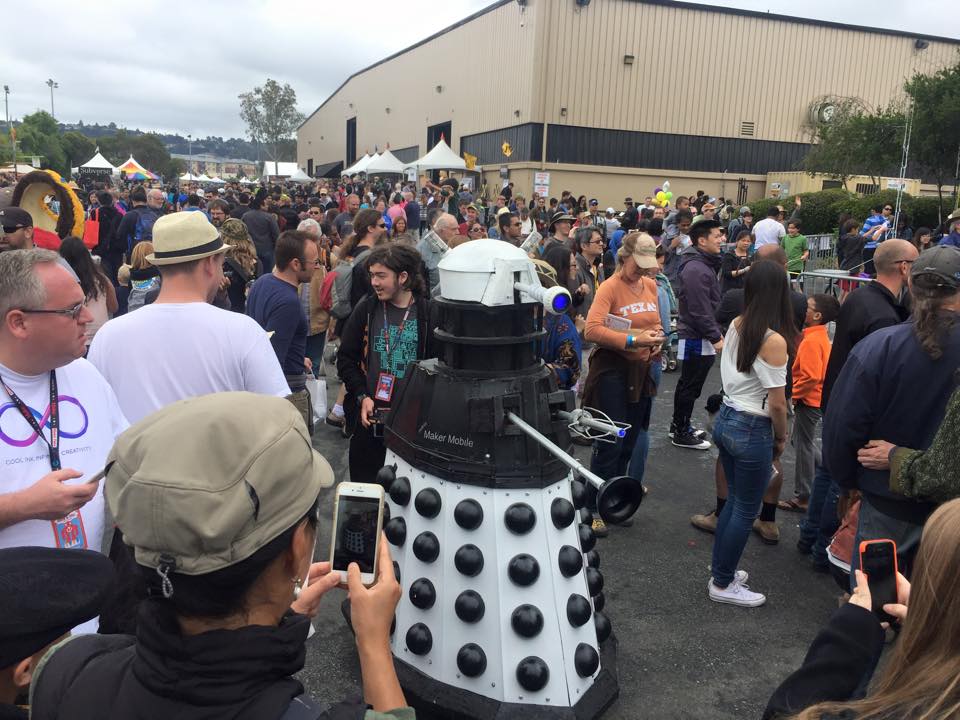
The Dalek has been the Design Process (Design, Build, Test, Rebuild) in action. From getting him working after breaking down at the Fairfax parade to ripping a large portion of wiring at a North Bay science faire, he has tested our skills and persistence. Along the way, he became a family and friends hobby.
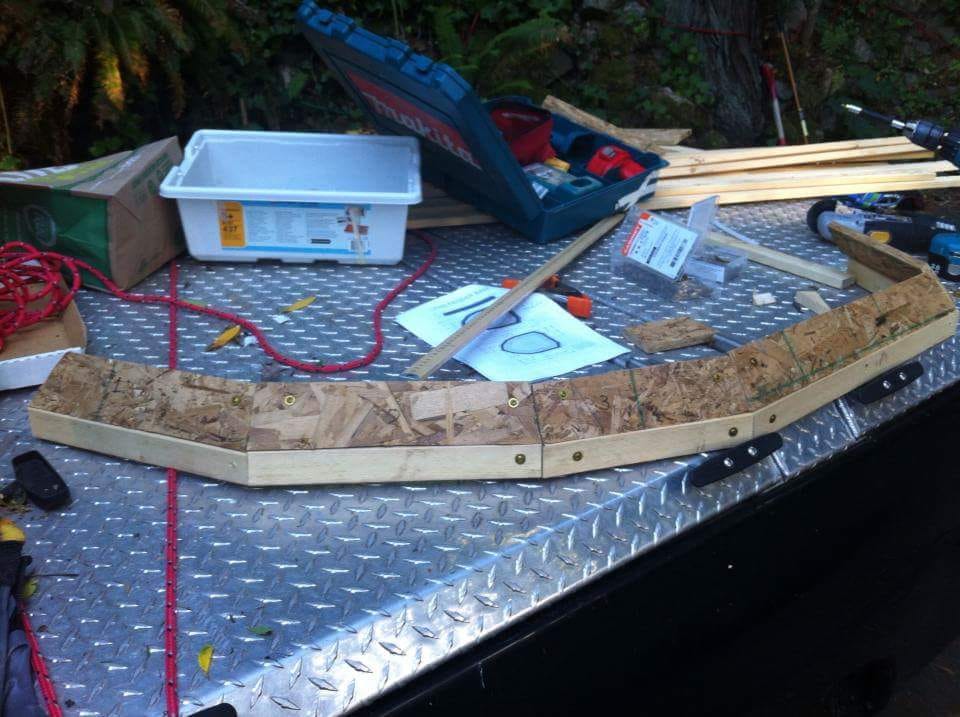
When the project started out, we wanted him to be different from most Daleks and made him remote controlled as opposed to sitting inside him. He has mecanum wheels which allow him to move forwards, backwards and sideways. The eyestalk could move up and down and the head could rotate. He had an arduino with sound board to allow us to play back sound clip through an on board amplifier by triggering them with a remote controller. ( His favorite word is “Exterminate!!! )
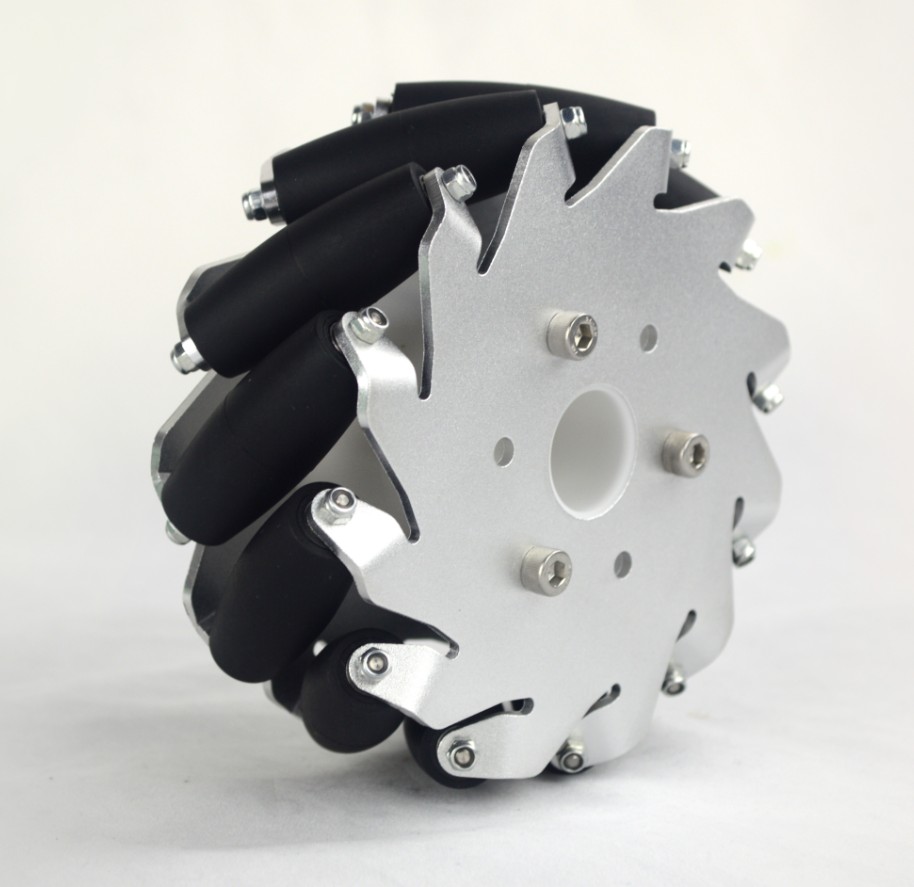
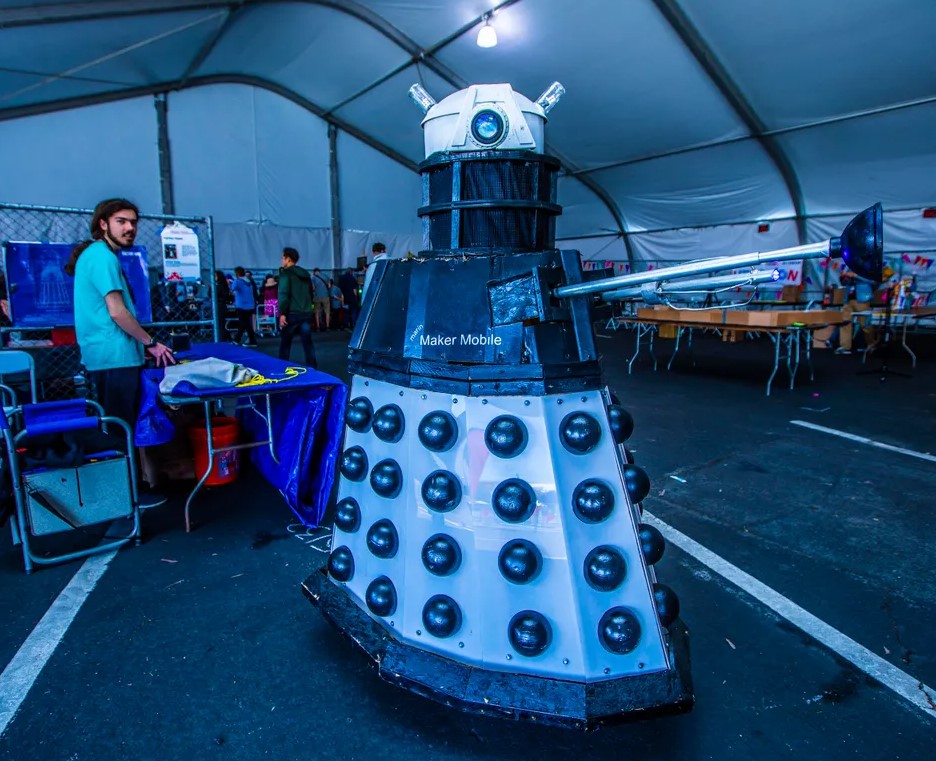
The Dalek has been an integral part of our maker community. A robotics teammate, Max, made it up from UC Santa Cruz to help us out at the 2018 Maker Faire. Max had been with us from middle school days on through Vex Robotics in high school. He received his degree in Computer Science.
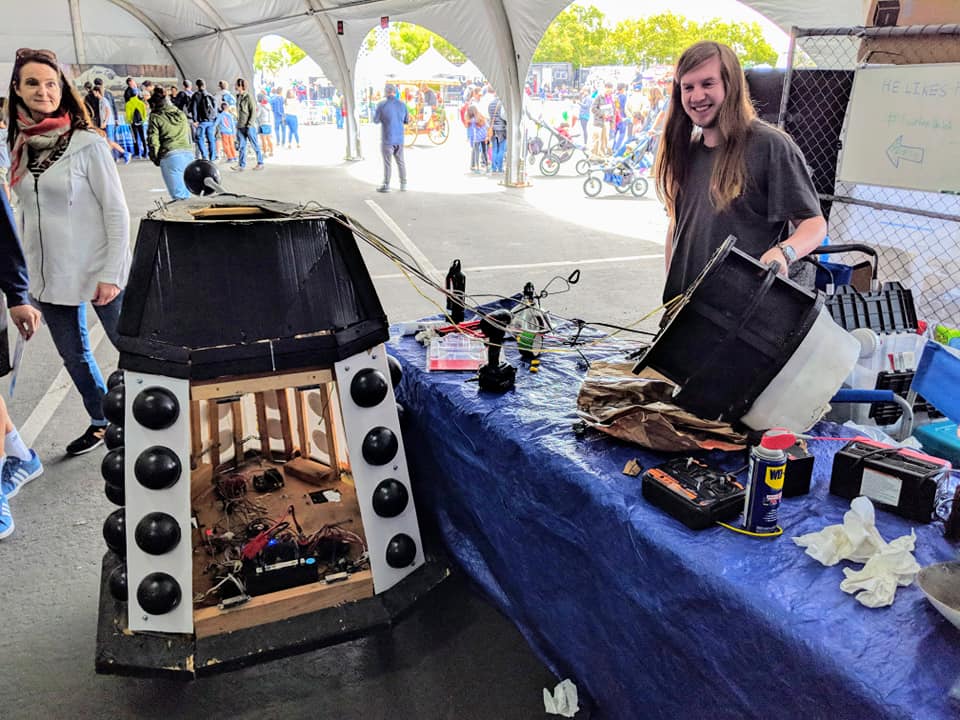
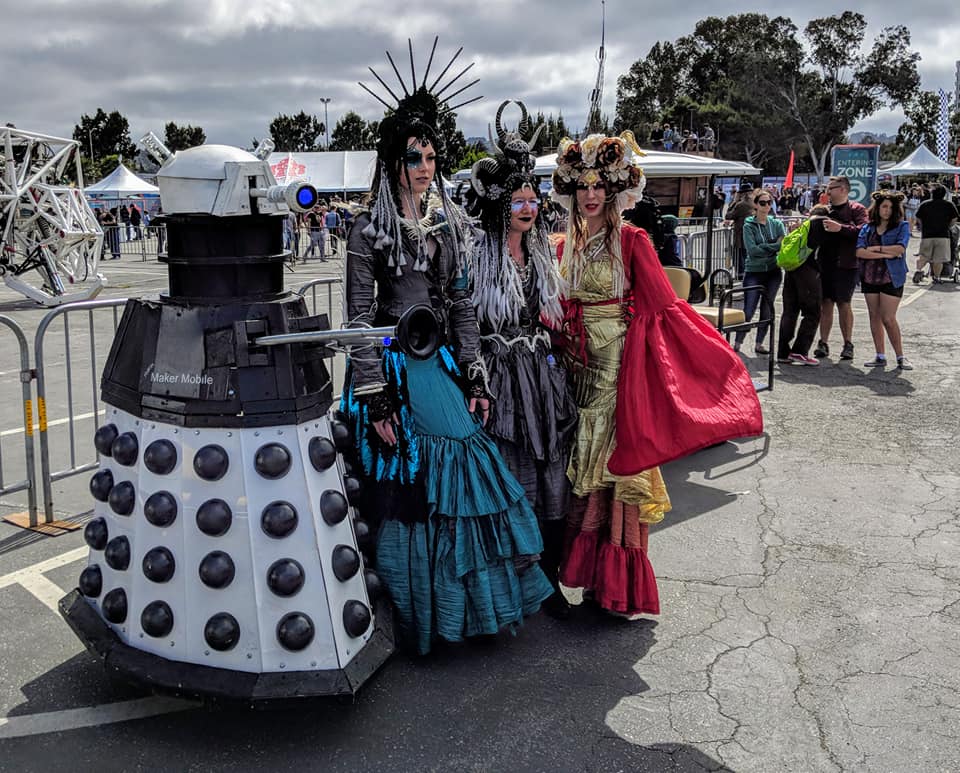

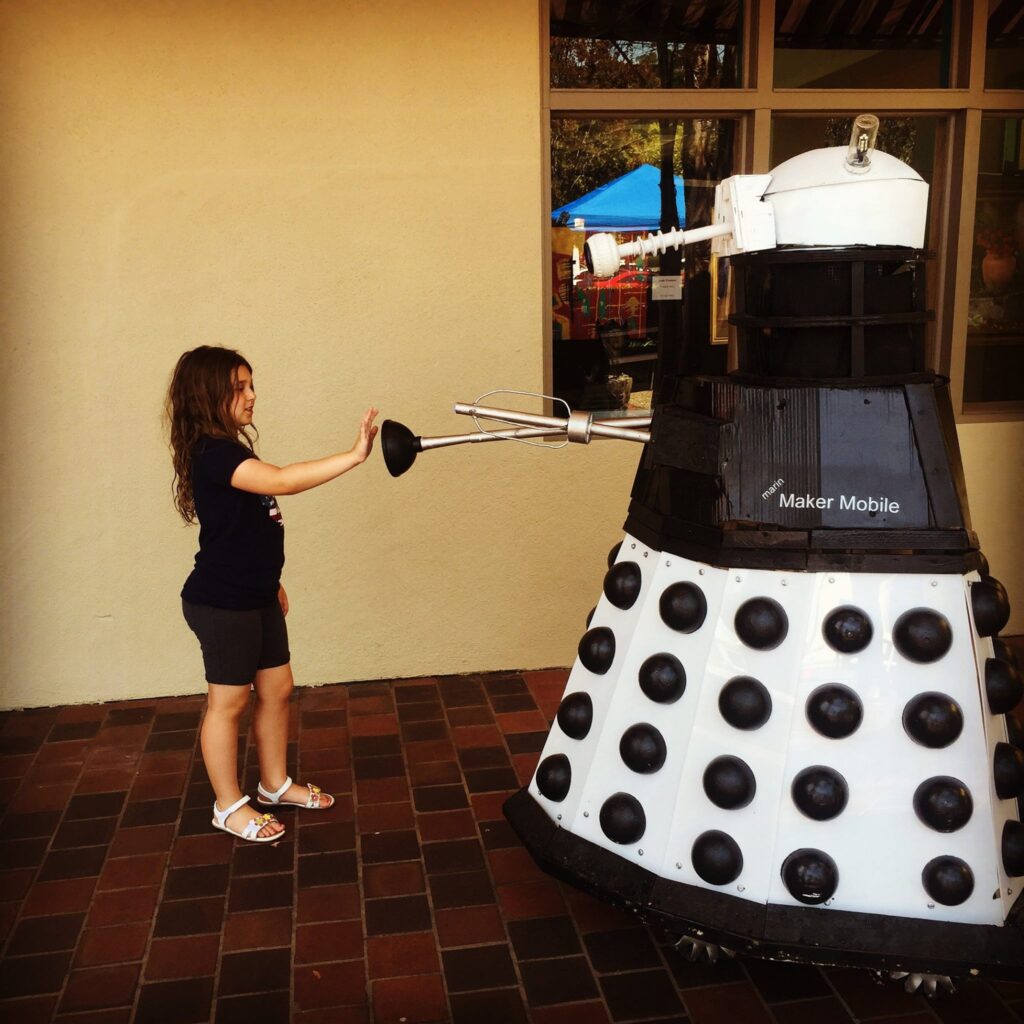
When we heard that Maker Faire was starting up again, Nick and I pulled him out of his trailer and started to assess him. We decided to rebuild him with some other the things we had thought of over the years. Some of the ideas included adding wireless microphone with sound changer, motorizing the weapon so it can move, and adding an iris to the eye to give a little more personality.
Nick had recently graduated from Cal Poly in Electrical Engineering so he took on building up the voice changer system. He also built a new power system, and implement a new BMS. He redid all the wiring for the motors and cleaned up the electronics, and designed and built a new circuit board to operate the lights for the gun, which was powered by an arduino. Andrew did the 3D printing for the iris and the ears, and rebuilt the chassis and redesigned it to be broken down into smaller pieces for transportation. Carol made the hemispheres and helped Nick with the gun programming. Ralph added AI, so that the eyestalk will track faces.
